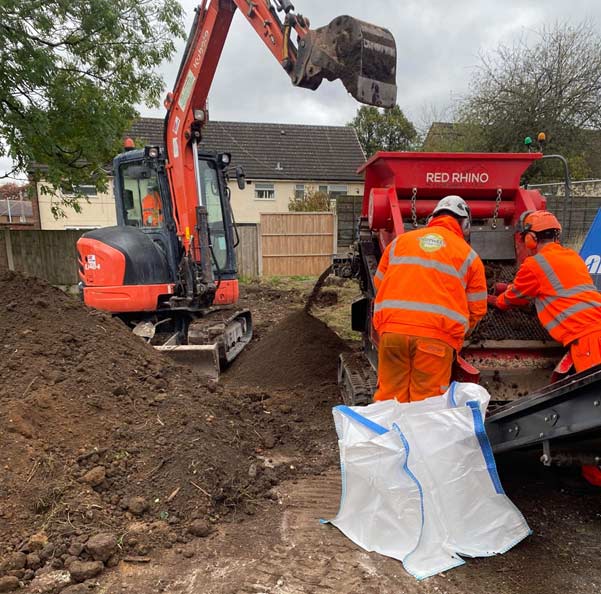JAPANESE KNOTWEED REMOVAL Whitchurch
2
LIVE KNOTWEED JOBS IN Whitchurch
6
SUCCESSFUL KNOTWEED REMOVAL PROJECTS IN Whitchurch
100%
SUCCESSFUL PROPERTY SALES AFTER TREATMENT
1
Whitchurch BASED KNOTWEED STAFF
NO OTHER JAPANESE KNOTWEED COMPANIES IN Whitchurch HAVE OUR TRACK RECORD
Japanese Knotweed Removal Whitchurch is our specialty. We treat Japanese Knotweed – and we do it with care and precision – offering you peace of mind and a longer lasting solution.
We are accredited by the PCA, a government-approved trade body for “the damp, waterproofing, wood preservation and invasive weeds industries.” We are experienced in Japanese knotweed removal.
Our company has successfully completed large-scale knotweed eradications in and around Whitchurch and England. To succeed, identification of the species, survey, treatment , and control must all take place. We can help you with your knotweed.
No more Japanese knotweed – How to Prevent, Tackle and Eradicate it
Knotweed is an invasive species that can severely damage your property, which is why it is essential that you contact us for a free survey. We identify the severity of your problem and propose a cost effective plan to eliminate knotweed completely.
If Japanese Knotweed is on your commercial land or property, projects on that land may be delayed until you deal with the infestation correctly and legally.
How Does Japanese Knotweed Spread
- Knotweed can grow into tarmac and concrete, which poses a threat to the structure of your property.
- Lenders won’t make mortgages against properties with knotweed infestations.
- Knotweed has strong branching and hollow stems that quickly grow and spread, obstructing both visibility and access to paths, highways and other infrastructure. This is a particular problem for commercial properties.
For customers in Whitchurch, who have Japanese Knotweed, they should call us right away. We’ll make sure the weed is removed completely and our warranty will ensure it doesn’t grow back.



FREE IDENTIFICATION
Fill in the form below, attach your pictures and we’ll let you know if the plant in your picture is Japanese Knotweed.
Call our experts now to undertake the treatment and management of your knotweed problem in Whitchurch
Call us on: 0121 725 6348 or 0800 689 4146 for an immediate idea on cost
Knotweed Services offers guidance from the initial contact, through the rest of the process.
RESIDENTIAL JAPANESE KNOTWEED REMOVAL Whitchurch.
WHAT YOU NEED TO KNOW ABOUT JAPANESE KNOTWEED REMOVAL Whitchurch
As Japanese knotweed infestations vary considerably, it’s not surprising that treatment and control methods will too. Several different methods may be necessary to complete the job.
We survey your knotweed problem and use the most effective methods for each growth stage, which allows us to deliver high-quality results that will produce a long-term solution. Our methods go beyond chemical treatments to identify root problems and prevent any future occurrences.
— JAPANESE KNOTWEED REMOVAL OPTIONS AVAILABLE IN Whitchurch

FOLIAR SPRAYING *
The most common treatment for Japanese Knotweed is the spraying of powerful chemicals with a knapsack. We make sure that other plants aren’t damaged. The best time to spray Japanese Knotweed is in the spring.

FOLIAR LEAF WIPING *
With this Japanese knotweed treatment, we use a device to ‘physically wipe’ our chemicals onto the Japanese knotweed leaves. Because this use is so exact, we can often utilise a larger concentration of chemical.

STEM INJECTION
We inject the invasive weed with a small dose of herbicide. This is the most cunning elimination technique since it involves injecting chemicals right into the Japanese knotweed. It is not affected by the weather.

BIOMASS REDUCTION
We only remove the soil that has been afflicted with Japanese Knotweed when we use biomass, which is a type of excavation and removal. Reusing the soil makes it a great approach for controlling Japanese knotweed. decreasing landfill usage.

CROWN REMOVAL
Crown and stems are capable of regenerating and even small fragments of cut crown or stem are capable of regenerating and becoming a new invasive weed – removing these from the equation is a great strategy.
— COMMERCIAL TREATMENT OPTIONS AVAILABLE IN Whitchurch

SOIL SCREENING
A tried-and-true methodology utilised on hundreds of sites across the UK.
The rhizome material of Japanese knotweed is removed from the soil material using the screening procedure. The Japanese knotweed debris is then either transferred to a licenced landfill at a significantly reduced disposal rate or burnt on site using a D6 exemption from the Environment Agency or Natural Resources Wales.
The cleaned soils can subsequently be used elsewhere, typically in soft landscaping areas where they will not interfere with construction.
This can greatly cut landfill and backfill expenses while also helping to minimise the carbon impact on site due to fewer truck travels to the dump.

BIOSECURITY SUPERVISION
We can provide a biosecurity operative to monitor any excavations or movement of Japanese knotweed-containing soil on your property.
As part of these measures, we can set up a place at the entrance to the site where people can wash their boots and machines. We will provide all toolbox talks for the main contractor on site, which will be signed by all contractors involved in the operation on site.
We can provide temporary geotextile barriers in areas where biosecurity is required.
Once the work has been completed, we will provide the client with a full biosecurity report.
This method can be used in conjunction with other treatment methods on site.

EXCAVATION AND DISPOSAL
This treatment method is ideal where time constraints are present and there’s no other option other than to remove both the Japanese Knotweed and contaminated soil to a registered landfill.
By removing all traces of the infestation quickly, this offers a rapid solution to your problem and allows your commercial project to begin groundwork’s almost straight away. When time is of the essence, there is no quicker Japanese Knotweed removal/treatment method.
Any waste taken off-site will be done so with a licensed waste carrier to a suitably authorised landfill site.

CELL BURIAL
Cell burial comprises of moving Knotweed contaminated soil from one location on site, burying it in an excavated pit which is lined with a root barrier membrane, in a different position on the site.
The burial requirements for Japanese Knotweed are as follows:
- The Environment Agency recommends that the top of the burial cell should be a minimum of 2 metres below ground level.
- The overall depth of the burial pit should be in excess of 5 metres deep. All root barrier seams are welded together forming an encapsulated cell from which the Japanese Knotweed cannot escape. Clean soil is then used to backfill on top of the cell.
- To prevent accidental disturbance of the burial site, it is recorded on all site plans and future land owners should be made aware of the location.

STOCKPILE & TREAT
Bunding is the method of relocating contaminated Japanese Knotweed soil to a different area of the site being treated. A bund is a shallow area of the contaminated soil, typically 0.5m deep.
The purpose of the bund is to move the Japanese Knotweed to an area of the site that is not used. This ‘buys time’ for treatment that would not be possible where the Japanese Knotweed was originally located.
To make the surface flush with the surroundings, the bund can either be lifted, placed on top of the land, or positioned inside an excavation.
For the surface of the bund to be flush with the surroundings, it can be raised, placed on top of the ground, or positioned inside an excavation.

HERBICIDE APPLICATION
At Knotweed Services we can provide the client with bespoke treatment plans depending on the locations of the Japanese knotweed.
These plans can work in conjunction with other methods of treatment where access is limited to pedestrian movements i.e., embankments or existing pathways within a site.
This will normally consist of up to 3 visits per annum to apply herbicide by either foliar spray technique or stem injection during the growing season over a period of 3 years, with a monitoring period of 2 years thereafter.
We would select the appropriate herbicides depending on the surrounding foliage or environmental constraints.
After each visit a full treatment record would be provided with photos showing the progress of the works and then an annual report.
